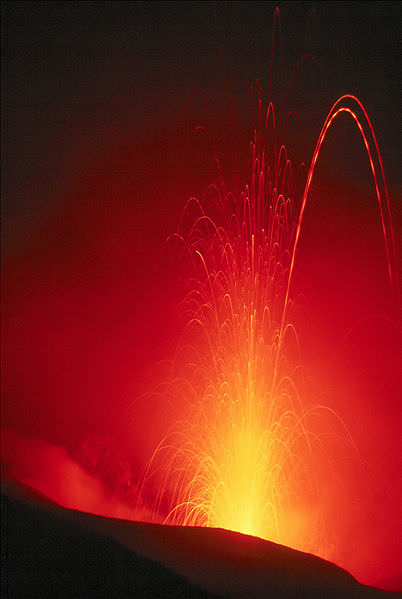[/caption]
Named after the volcano Stromboli in Siciliy, Strombolian eruptions are one of the most beautiful to watch; and fortunately, they’re one of the less dangerous types of eruptions. A Strombolian eruption has huge blobs of lava and hot rocks bursting from the volcano’s vent. As the lava hits on the sides of the volcano, it streams down the slopes in fiery rivers.
Strombolian eruptions occur when gas inside the volcano coalesces into bubbles, called slugs. These grow large enough to rise through the magma column. Once they reach the top of the magma column, they burst because of the lower air pressure, and throw magma into the air. Imagine a soap bubble popping, throwing soapy material everywhere. During an eruption, these gas bubbles can be popping every few minutes.
Since a Strombolian eruption doesn’t cause catastrophic damage to the volcano itself, they can keep going for years and years. In fact, Stromboli itself has been erupting this way for thousands of years. Another famous Strombolian volcano is Mount Erebus in Antarctica.
One of the best ways to experience a Strombolian eruption is to see it at night. That when the glowing blobs of magma are easily seen against the dark sky.
We have written many articles about volcanoes for Universe Today. Here’s an article about different types of volcanoes, and here’s an article about different types of lava.
Want more resources on the Earth? Here’s a link to NASA’s Human Spaceflight page, and here’s NASA’s Visible Earth.
We have also recorded an episode of Astronomy Cast about Earth, as part of our tour through the Solar System – Episode 51: Earth.

